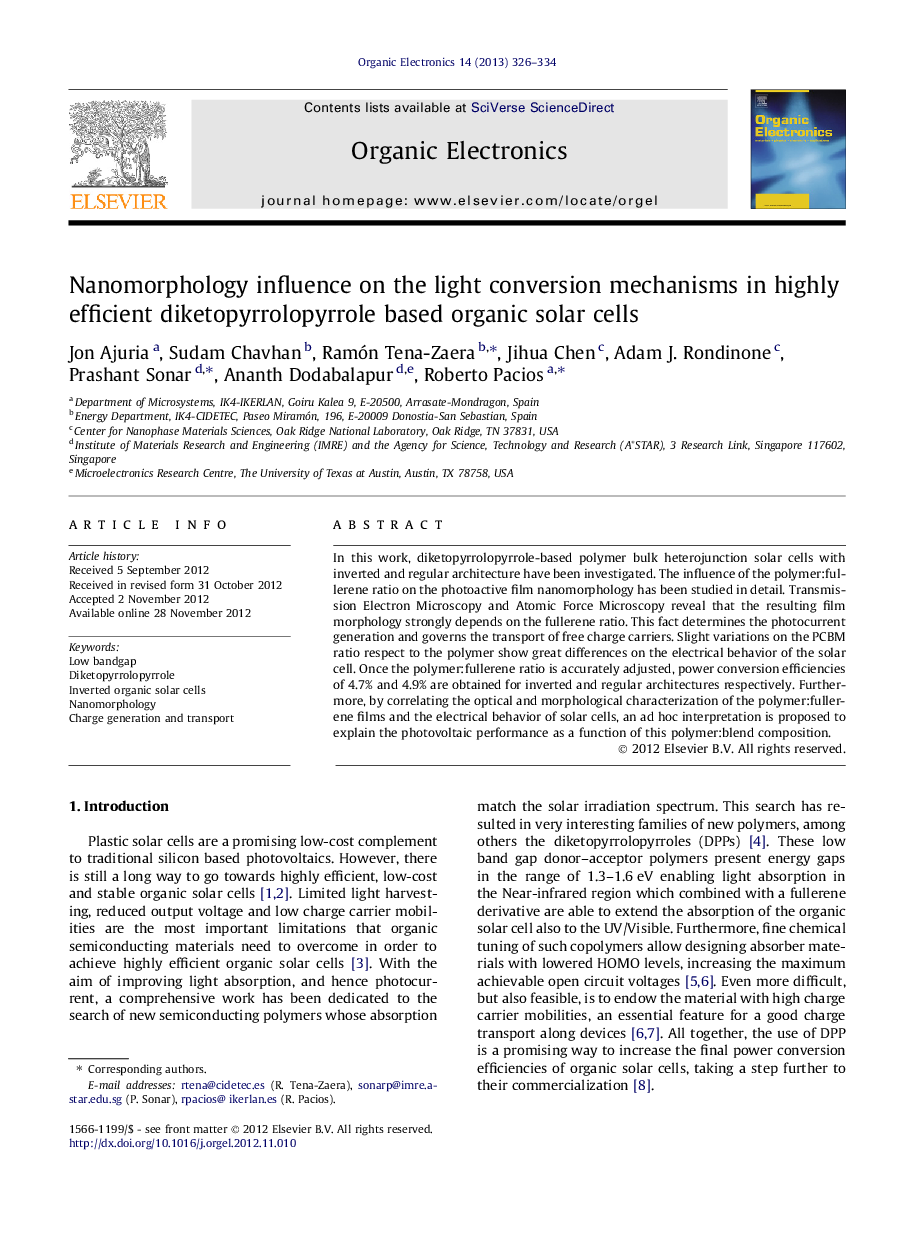| Article ID | Journal | Published Year | Pages | File Type |
|---|---|---|---|---|
| 1263973 | Organic Electronics | 2013 | 9 Pages |
In this work, diketopyrrolopyrrole-based polymer bulk heterojunction solar cells with inverted and regular architecture have been investigated. The influence of the polymer:fullerene ratio on the photoactive film nanomorphology has been studied in detail. Transmission Electron Microscopy and Atomic Force Microscopy reveal that the resulting film morphology strongly depends on the fullerene ratio. This fact determines the photocurrent generation and governs the transport of free charge carriers. Slight variations on the PCBM ratio respect to the polymer show great differences on the electrical behavior of the solar cell. Once the polymer:fullerene ratio is accurately adjusted, power conversion efficiencies of 4.7% and 4.9% are obtained for inverted and regular architectures respectively. Furthermore, by correlating the optical and morphological characterization of the polymer:fullerene films and the electrical behavior of solar cells, an ad hoc interpretation is proposed to explain the photovoltaic performance as a function of this polymer:blend composition.
Graphical abstractFigure optionsDownload full-size imageDownload as PowerPoint slideHighlights► Highly efficient diketopyrrolopyrrole based organic solar cells. ► Detailed study on nanomorphology and effect of donor to acceptor ratio’s on OPV performance. ► Morphological model explaining photovoltaic performance as a function of the blend composition.
